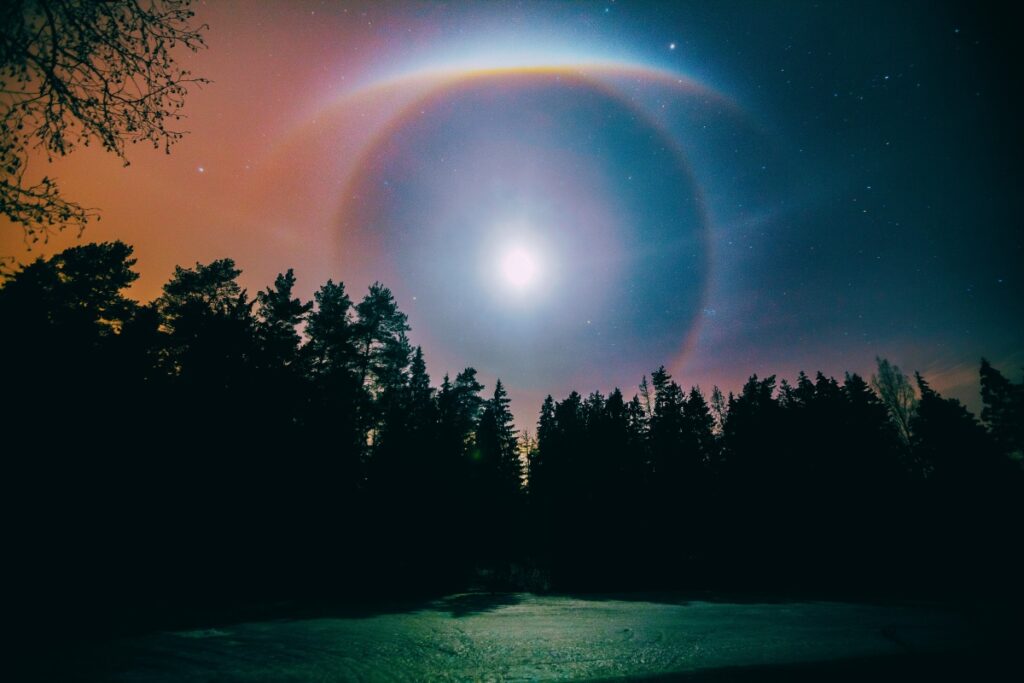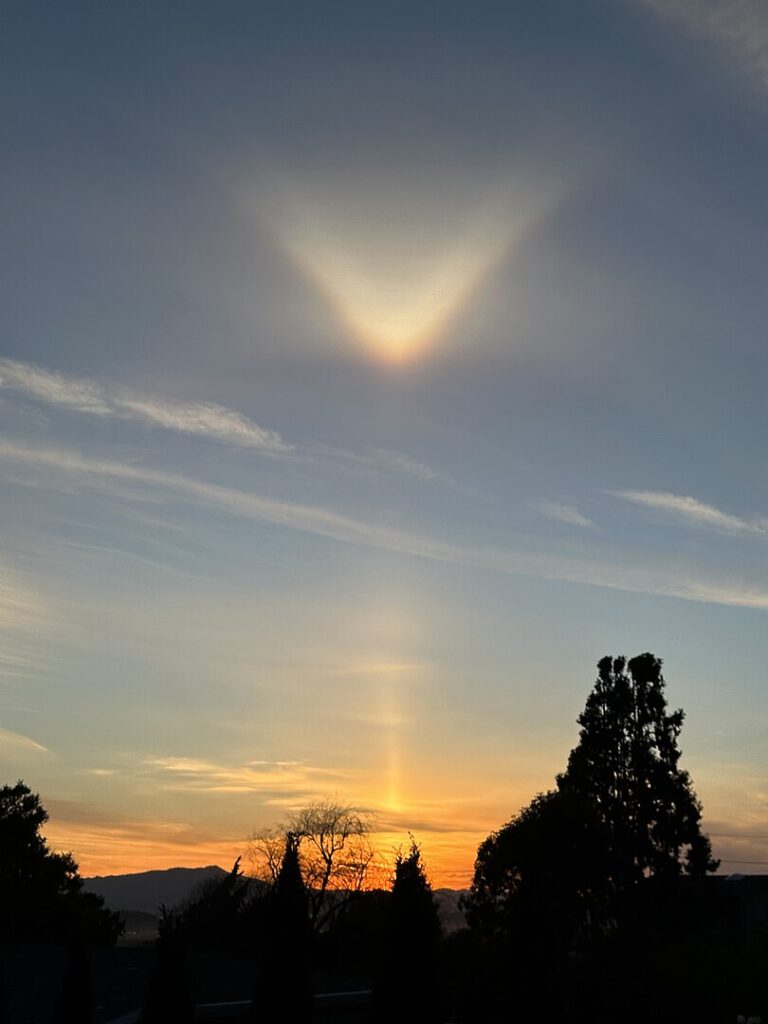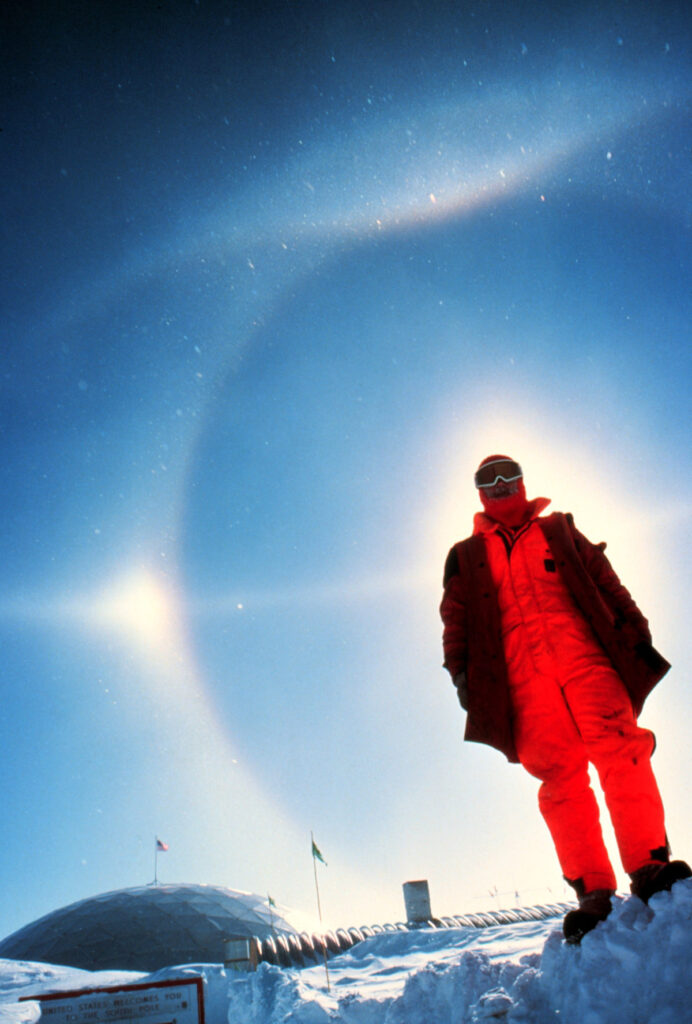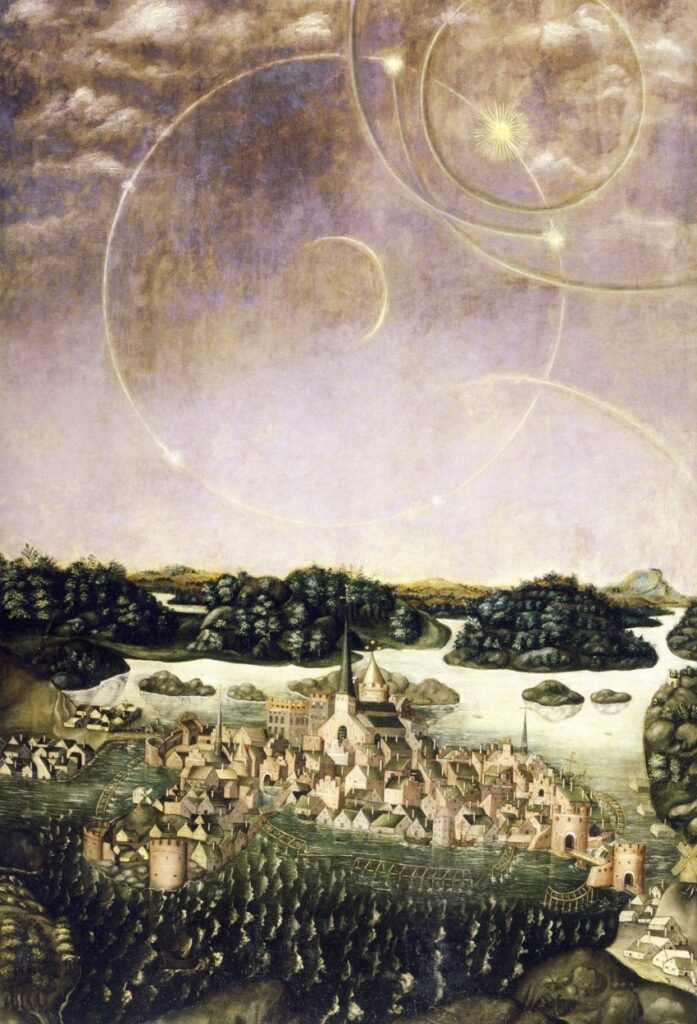
Nature’s enchanting display of halos never ceases to captivate our imaginations. These ethereal optical phenomena grace the heavens with their mesmerizing beauty, leaving us in awe of their celestial presence.

Have you ever witnessed a radiant ring of light encircling the Sun or the Moon? If so, you were fortunate to behold a halo—a breathtaking atmospheric phenomenon that occurs when light interacts with ice crystals in the sky. Halos come in various shapes and colors, depending on the types and orientations of the ice crystals and the angle of the light source.

Among the most common and well-known halos is the 22° halo. This captivating sight manifests as a circular ring of light, with an apparent radius of 22°, encircling the Sun or the Moon. The 22° halo occurs due to the refraction of light through hexagonal ice crystals found in thin cirrus or cirrostratus clouds. This refraction disperses the light into its constituent colors, with red appearing closest to the center and blue farthest from the center of the halo. Additionally, the 22° halo can be accompanied by sun dogs (bright spots on either side), upper tangent arcs (curved arcs touching the top), or circumzenithal arcs (upside-down rainbows above).

Another celestial marvel is the light pillar, a vertical column of light extending above or below the light source. Light pillars arise from the reflection of light by flat, near-horizontal ice crystals present in the air close to the ground or in high clouds. The shape and color of the light pillar depend on factors such as the observer’s position, the height and density of the ice crystals, and the brightness and size of the light source.

Various atmospheric conditions give rise to different types of halos, including Bottlinger’s rings, Parry arcs, sun crosses, and more. Each possesses a distinct appearance and formation mechanism, involving a combination of ice crystal refraction and reflection.

Throughout history, halos have held great significance in different cultures and traditions. Often associated with divine or supernatural forces, they have been depicted in ancient art and religious symbolism, symbolizing purity, enlightenment, or otherworldly presence.

Among the earliest depictions of halo displays is the painting called Vädersolstavlan, also known as “The Sundog Painting.” Created in the 16th century, it portrays the city of Stockholm and captures the spectacle that unfolded on April 20, 1535. The sky adorned itself with numerous white circles and arcs intersecting the heavens, accompanied by additional suns known as sun dogs. This breathtaking phenomenon persisted for two extraordinary hours.

Halos serve as captivating examples of how nature weaves intricate optical effects with simple ingredients. As we gaze skyward and witness these celestial wonders, we are reminded of the intricate beauty that surrounds us. Let us look up, embrace the magic above, and immerse ourselves in the celestial dance of halos!

Leave a Reply